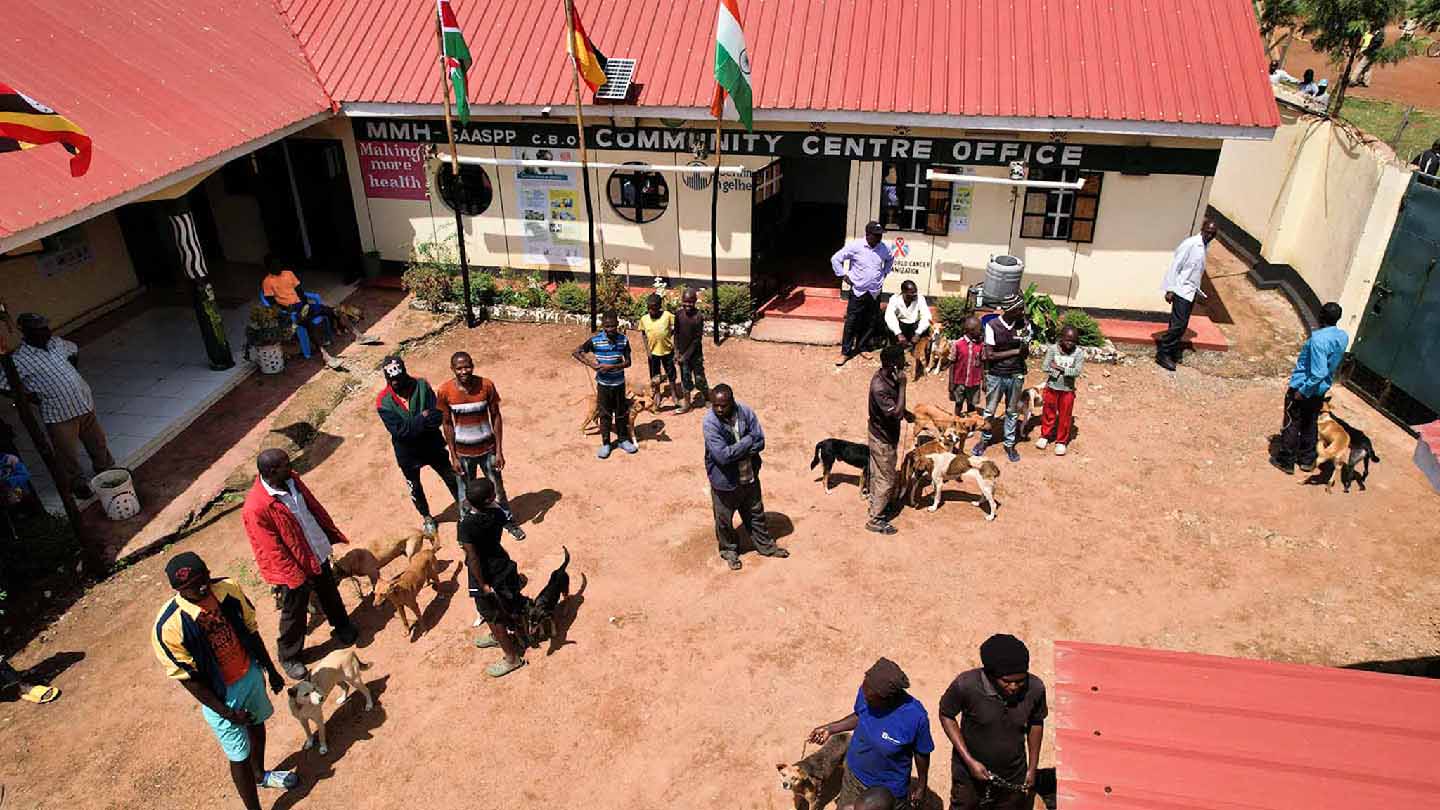Facilitating rabies vaccinations with drone delivery in rural Kenya
How we continue bridging healthcare gaps through the skies

This is the continued story of our efforts to help eliminate rabies in rural Kenya using drone-delivery. These drones carry not just vaccines, but an important message: No one should die from a preventable disease.
In the heart of Western Kenya where healthcare facilities are few and electricity is unreliable, a quiet revolution is taking flight. Boehringer Ingelheim is tapping into the power of the skies and forging partnerships to tackle a significant threat: rabies. In rural Kenya, stopping the spread of rabies has been a hard battle as vaccines are scarce, and patients often endure hours of travel on rough roads to seek treatment.
Florence Wanyama, a resident of Bungoma County recalls a horrid incident that changed her life forever. “I was bitten by a dog, with no money at the time to treat myself. I got money from someone for treatment because if I had delayed, the situation would have been worse. I was already paralyzed on one side, and it took me three to four days to get to the hospital,” she recalls. “I struggled to receive the care I needed. Until today, the spot where I was bitten still itches sometimes, so I don’t want this problem to continue. I want people to be educated and understand the need to vaccinate their dogs.”
Closing healthcare gaps with drone delivery of rabies vaccines
Since the drones first flew across Bungoma County in July 2023, successfully delivering 2,000 rabies vaccines in one day, Boehringer has continued to leverage its partnerships to implemented additional anti-rabies vaccine campaigns at other sites in Western Kenya.
In partnership with our distributors and Zipline, a renowned drone-delivery company, along with our Making More Health (MMH) network partners, including Core Health and Wealth (CHW), Golden Age and Albinism Support and Protection Program (GAASPP), as well as County Veterinary Authorities, and the Kenyan local government, Boehringer continues to deliver hope in packages of rabies vaccines. By early 2024, these effective and reliable collaborations have led to a recorded total number of 18,000 dog vaccinations through the campaigns in the region.
The ripple effect of our rabies vaccination campaigns
The innovative use of drones has gone a long way in capturing public interest in these counties. Their appearance sparks curiosity indirectly raising awareness about rabies. As a result, communities are becoming more informed and proactive. By Kenyan law, dog owners face payment of hefty fines, if their dogs bite someone. However, up-to-date rabies vaccinations in these areas now mitigate this fear and treatment costs are no longer a burden for responsible pet owners.
NGOs like GAASPP have been inspired to take action by utilizing diverse channels like council forums, churches, mosques, and school to deliver awareness campaigns and educate community members on responsible pet ownership. “Red Cross Kenya has already expressed interest. With nearly 300 community volunteers in the area, we are currently assessing how they can possibly assist in spreading the word about our campaigns,” says Joseph Kipkemoi, Regional Sales Manager at Boehringer, who coordinates the teams for the drone-delivery campaigns.
These efforts reinforce the objectives of the campaigns, which are to reduce human death from dog-mediated rabies and motivate other stakeholders like the local governments, NGOs and other companies and organizations to take action.
Navigating healthcare challenges towards sustainable progress
Collaborative efforts are making strides, yet obstacles remain. The communities underscore that government involvement remains crucial in shaping future outcomes. David Khaemba, a GAASPP vet working closely with government veterinarians, shares insights on some of the challenges. “We continue to struggle with awareness gaps, bureaucratic hurdles within the government, and a complex funding process.”
For Joseph, “Achieving the 70 percent needed to stop the spread of the rabies virus in dog populations requires concerted efforts from private sectors and the government. Beyond raising awareness, vaccination is the key. Local government leaders must allocate funding for rabies vaccines." The long-term goal is to vaccinate Kenya’s necessary threshold of 70 % of the currently three million dogs to mitigate the threats posed by rabies. He continues, “Sustainability hinges on county governments budgeting for rabies control using national resources, with local partners and village dog owners also contributing.”
Ultimately, these campaigns are sparking the right actions towards creating safer and healthier communities. This is in line with our Sustainable Development for Generations commitment, striving to improve the lives of people and animals living in underserved communities through innovation and multi-stakeholder collaboration.
---
Our rabies vaccination campaigns in Kenya: Project achievements


Links

10 things you should know about rabies

Explore more Stop Rabies stories
Downloads

Defining underserved communities
Related Press Releases

Boehringer Ingelheim increases commitments to sustainable development, investing in health innovation and collaborations to expand access and improve healthcare for 50 million people in vulnerable communities by 2030
Related Content


